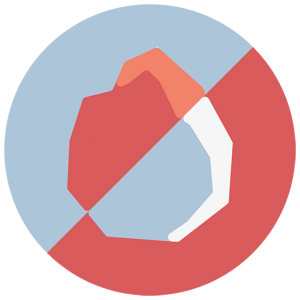About
Do you ever ask yourself some of the following questions?
Why is Cork so hilly?
Were there dinosaurs in Cork?
Can you find gold in Cork?
Were there dinosaurs in Cork?
Can you find gold in Cork?
Well, we’re going to answer these questions because all of those questions relate to the study of GEOLOGY:
the study of our beautiful planet – the physical, the dynamics and the history of the Earth.
Cork City has a great geological legacy that is an integral part of the city’s culture and history. The city was built on marshes and its landscape reminds us of the importance of understanding geology and geomorphology (how the underlying geology affects the landscape above).
Red and white are colours that regularly come to mind when describing Cork. They make up the city’s flag but also represent the two main rock types rock types that form the foundations of the city. Those red (sandstone) and white (limestone) rocks were used to build the historical monuments and houses in the city.
the study of our beautiful planet – the physical, the dynamics and the history of the Earth.
Cork City has a great geological legacy that is an integral part of the city’s culture and history. The city was built on marshes and its landscape reminds us of the importance of understanding geology and geomorphology (how the underlying geology affects the landscape above).
Red and white are colours that regularly come to mind when describing Cork. They make up the city’s flag but also represent the two main rock types rock types that form the foundations of the city. Those red (sandstone) and white (limestone) rocks were used to build the historical monuments and houses in the city.
With our geoheritage project, funded by Geological Survey Ireland, we’ll show you that geology is everywhere around us and has great cultural and historical importance. Geology is fun and we’ll explain it in simple ways, accessible to everyone. We have consulted with experts, dived into current geological research and used technological tools from graphic design, animation and photogrammetry to make Cork’s rocks come alive. We have created visual reconstructions of what Cork looked like in the distant past and also 3D models of local rocks and fossils and we invite you to explore them all!
Our walking trails will guide you through historical and geological Cork, helping you to imagine how the city looked a very long time ago. Also, follow us on Instagram for updates and quirky little nuggets of information.
- Aude and Thomas
Our walking trails will guide you through historical and geological Cork, helping you to imagine how the city looked a very long time ago. Also, follow us on Instagram for updates and quirky little nuggets of information.
- Aude and Thomas
The Team

Aude Cincotta
Aude has a Bachelor’s and Master’s degree in Earth Sciences from the University of Brussels and a PhD in Palaeontology from the University of Namur in Belgium. She moved from Brussels to Cork in October 2018 to work on the preservation of fossils in amber (fossil tree resin) in the department of geology at University College Cork.
She then relocated to Dublin in 2019 for a year to undertake a postdoctoral internship at the Irish Research Council and then returned to her research on fossils in Cork.
Aude is now back in her home country where, after pursuing research on Devonian fossils, she took another career path. She now works in a consulting firm helping companies shaping their R&D projects and get public funding.
She then relocated to Dublin in 2019 for a year to undertake a postdoctoral internship at the Irish Research Council and then returned to her research on fossils in Cork.
Aude is now back in her home country where, after pursuing research on Devonian fossils, she took another career path. She now works in a consulting firm helping companies shaping their R&D projects and get public funding.
Thomas Heising
Originally from Denmark, Thomas is working in Cork as a motion graphics artist and visual science communicator. He completed his BSc in geology and geoscience at the University of Copenhagen before getting an MA in African Studies which he has since coupled with his creative background.
He too arrived to Cork in 2018 where he initially worked in IT. But inspired by the beautiful landscapes of Cork, he then brought his passion for graphics up again; building into a full-time visual science communication role. He has since worked on projects aimed at communicating climate change, marine biology, atmospheric sciences and, of course, geology.
Time in Cork is also spent on activism, hiking, geological excursions around the country and personal video projects.
He too arrived to Cork in 2018 where he initially worked in IT. But inspired by the beautiful landscapes of Cork, he then brought his passion for graphics up again; building into a full-time visual science communication role. He has since worked on projects aimed at communicating climate change, marine biology, atmospheric sciences and, of course, geology.
Time in Cork is also spent on activism, hiking, geological excursions around the country and personal video projects.
Acknowledgements
Individuals:
Derbhile Dromey; Sarah Glenton; Karl Grabe; Ronan Hennessy; Bettie Higgs; Ken Higgs; Emma Hurley; Ed Jarvis; Mary Lehane; Elaine Lucey; Peadar MacAindriú; Larissa Macedo Cruz de Oliveira; Kieran McCarthy; Odhràn McCarthy; Pat Meere; Margaret Mohally; Chris Moody; Eamonn Mooney; Claire O'Rorke; Nicole Ryan; Ciarán O’Sullivan; Richard Scriven; Jim Sheehan; Richard Unitt.
Organisations:
Claire O'Rorke Photography
Cork Geological Association
Eamonnz Media
Geological Survey Ireland
Lagan Group Bweeng
Margaret Mohally Design
Roadstone Carrigtwohill
Biological, Earth & Environmental Sciences UCC
